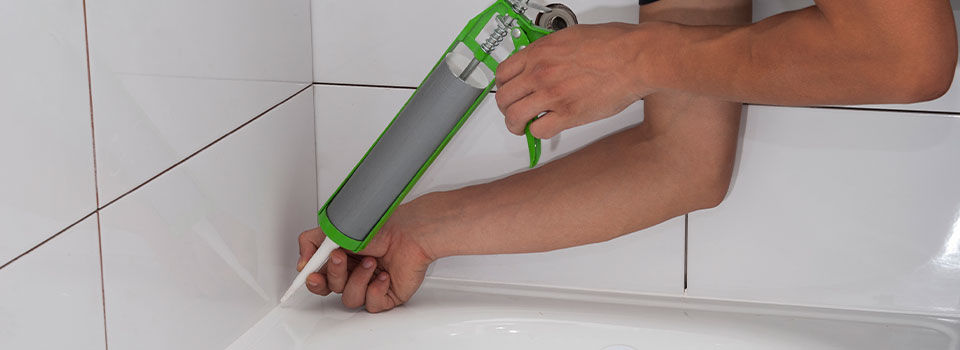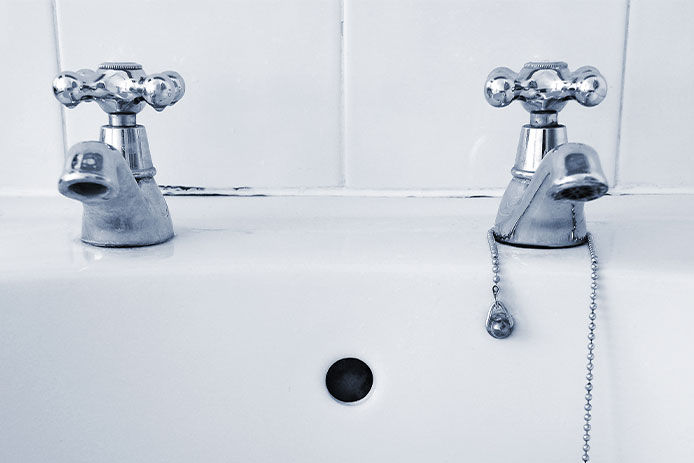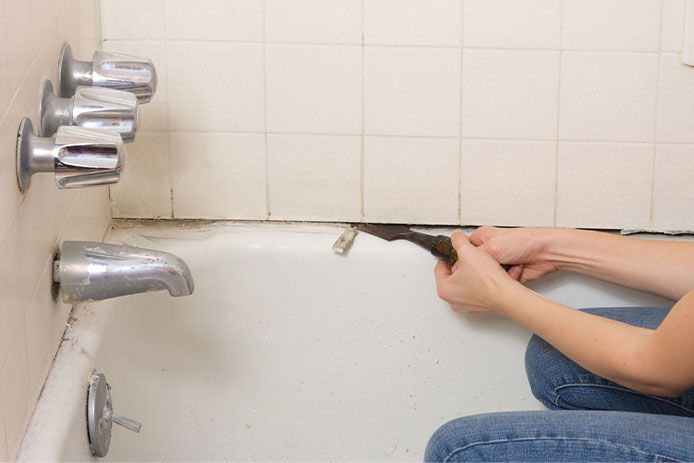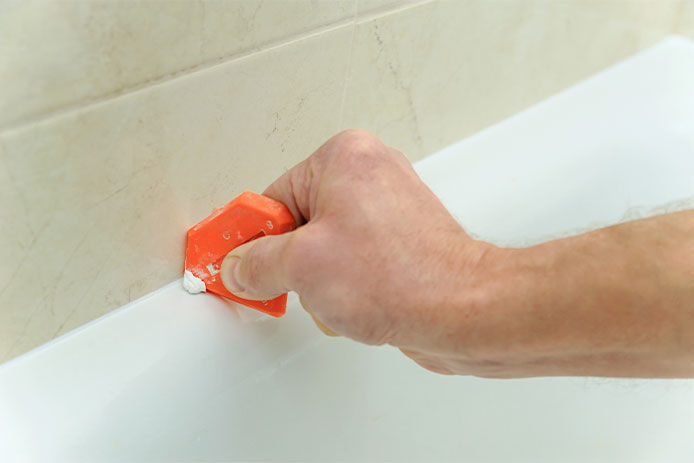While do-it-yourself projects can be fun and fulfilling, there is always a potential for personal injury or property damage. We strongly suggest that any project beyond your abilities be left to licensed professionals such as electricians, plumbers, and carpenters. Any action you take upon the information on this website is strictly at your own risk, and we assume no responsibility or liability for the contents of this article.
How to Remove and Replace Your Tub and Shower Caulk

Caulk doesn’t just give your shower and tub a seamless look where the surround meets at the edges. It’s also key for keeping moisture from getting behind the surround and soaking in around the tub’s sides. Even the best caulk tends to become discolored with mildew without regular replacement. Scrubbing will eventually stop removing the gray, brown, or black spots that form. Even if the caulk is still spotless, it develops cracks after three to five years, letting moisture silently seep through. If you’ve noticed water doesn’t bead up over the caulk line as it should, it’s likely leaking.
Why Remove the Old Caulk First?

It may seem like the job would go faster if you just applied new caulk right away. However, there are a few different reasons that won’t work out well. First, it will look very messy, and there will be no way to get a smooth, even bead like you can with a fresh application. Second, caulk doesn’t like to adhere to old layers of caulk. The new material will crack and peel away, failing to solve the problem and making a mess. Third, you may want to switch from an acrylic-based caulk to one made with polyurethane or silicone instead. While even the same caulk doesn’t like to stick to itself once cured, different types of caulk definitely won’t adhere together. Removing the old caulk is the best way to get started on this project.
Removing the Caulk the Easy Way

All you really need is a sharp tool designed to get into the right angles of the tub or shower where the caulk resides. Specialty tools make the job go more quickly and help prevent or minimize damage to the tiles or shower surround, but even a carefully wielded utility knife will work. Before scraping, apply a layer of caulk remover. This is a liquid you can find at any hardware store that also sells caulk. It should work on all types regardless of the composition and help soften the material so that it’s easy to scrape away. Ball up or peel away the loosened caulk as you work to see how much is still left on the surface. Aim to remove as much as you can without doing damage to any of the tub or shower materials. After you’ve gotten the old caulk off, rub down the areas you’re working on with isopropyl alcohol to get them clean without adding any water while the seam is open.
Applying Caulk Smoothly and Evenly

You don’t need to be a DIY whiz to get caulking right. Just take your time, aim for smooth and gentle movements, and work on a small section at a time if necessary. Depending on the caulk you choose, you have about 10 minutes of working time before the material starts drying. Feeling rushed will only cause mistakes, so work slowly and with minimal amounts of caulk at a time.
Load your caulk into a caulking gun or prime the tube by squeezing a bit out and wiping it off. Place the nozzle of the caulk tube directly in the center of the seam you’re sealing. Begin moving the tube slowly along the seam before pulling the trigger or squeezing the tube. This creates a smooth, even bead that fills the gap without making uneven globs of material. Try to keep the pressure on the trigger or tube even as you draw your arm down the line. Lift it away at the end of the line, then grab a smoothing tool or use your gloved finger. Run the tool or finger over the center of the caulk line, aiming to gently smear it over the surfaces both above and below the seam. As with the caulking gun, moving your arm slowly and at a steady pace produces the best results. Caulk must be smoothed before it dries and hardens, or it won’t properly adhere. Wipe up any drops or smears of caulk with a rag dampened with alcohol, then move on to the next seam. Try to get all connected seams in the shower or tub done at once so that they seal together where they meet. Unconnected seams can be sealed with no rush since they are separated and won’t leak where they come together if they are done at different times.
If you’re worried about your ability to smooth the caulk evenly, try putting painter’s tape up around the seam for cleaner edges. Just make sure to pull the tape up before the caulk dries since it could pull the caulk up then too. With a little practice, you can easily caulk a tub or shower just as nicely as any professional.